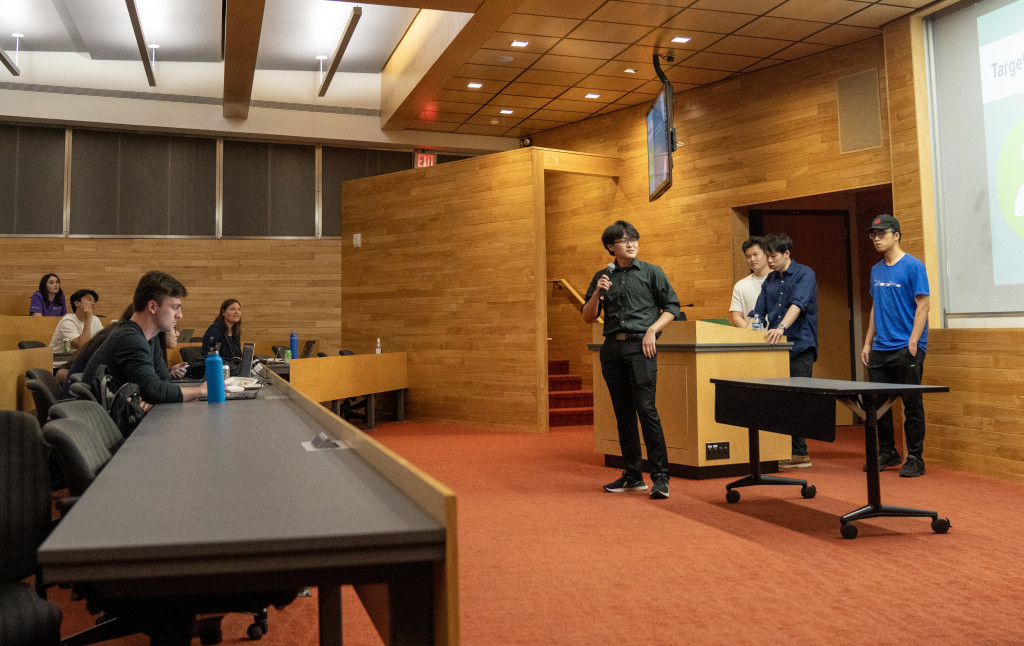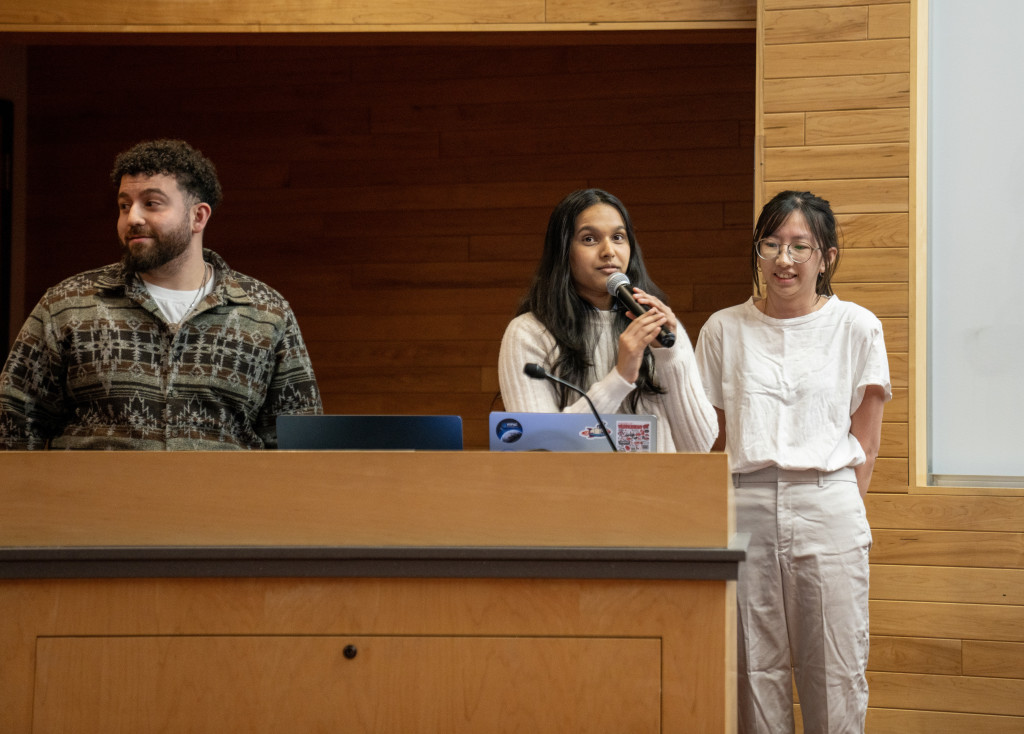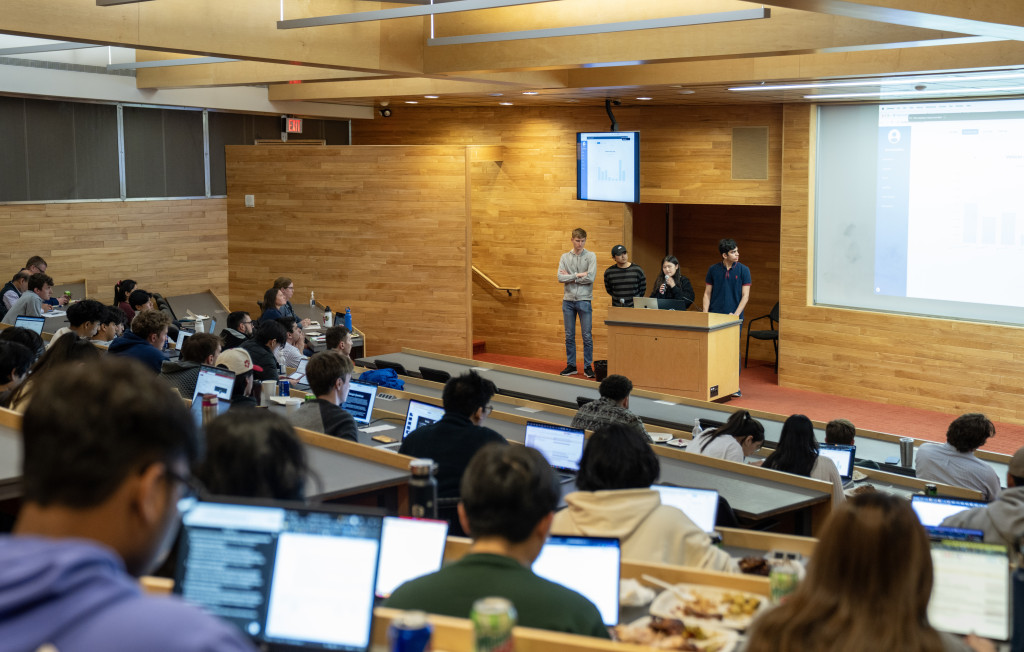Computer Sciences capstone prepares to scale experiential learning for students
It’s March 10, and mid-semester presentations are underway in the Computer Sciences capstone course. Dressed in textbook business casual, senior Bill Zhu is addressing 100 or so of his classmates and their capstone mentors from Google, GE HealthCare, Capital One, and elsewhere. Despite the expertise in the room, he’s not nervous at all.
“In 2016, the estimated cost of ‘churn’ resulting from poor service was reported to be $1.6 trillion in the US,” says Zhu, setting the scene. “We can’t completely prevent it. But we can mitigate it.”
“Churn,” or the percentage of customers who stop spending money with a business or organization over a period of time, is one of many real-world problems students tackle in the Computer Sciences capstone course, an experiential learning seminar taught by Amber Field. In the course, students partner with mentors from various companies—some local, some not—and gain hands-on experience.
Zhu and team members James Chen, Jimmy He, and Zhongzheng Zhou have been working on a solution with NUU, a Dallas-based Android smartphone company, since the beginning of the semester. Mentored by William Wang, lead data scientist, and Steve Khan, chief engineer, the team has been steadily creating a product that will analyze—and mitigate—NUU’s churn.
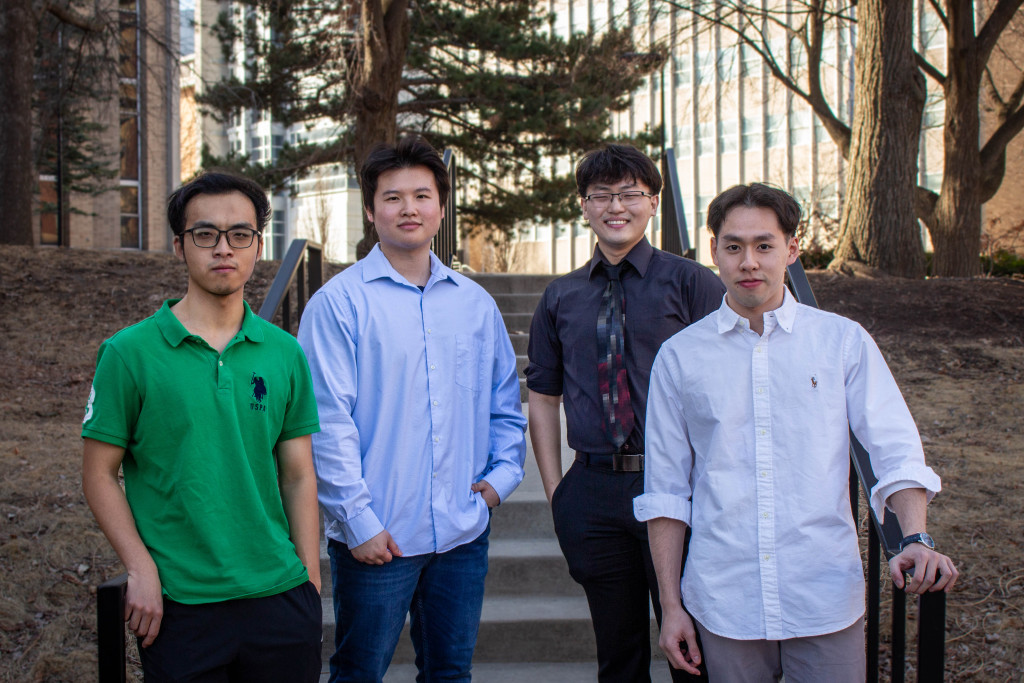
From left to right, Zhongzheng Zhou, Jimmy He, Bill Zhu and James Chen gather for a team photo on the UW–Madison campus. Photo: Rachel Robey
Experiential learning, hard at work
Alongside the weekly meetings between students and their industry mentors, the 100-person class meets for weekly two-hour seminars covering everything from presentation skills to career panels. The syllabus also covers presentation skills and how to break down large projects into manageable tasks, much like they’ll need to in “the real world.”
“I try to pack into it as much real-world experience as I can so the students will be prepared for their first jobs post-graduation,” said Field in a blog post. As the capstone’s founding instructor, Field has been at the helm since it began in 2020 with just 26 students and three industry partners.
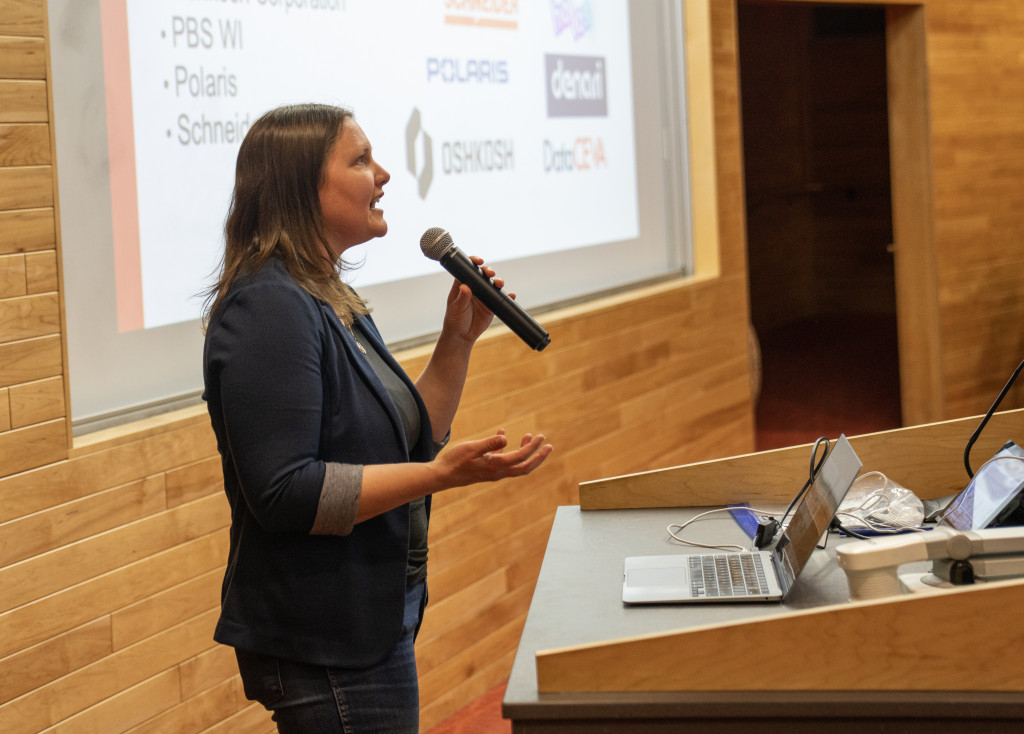
Amber Field addresses a filled room in the Computer Sciences building. That evening, students in Field’s capstone class presented their semester-long projects to their capstone mentors.
Her curriculum exposes students to agile methodology, a style of working popularized in software development. An agile approach prioritizes regularly delivering small amounts of work over large, final products. Now popular across industries and teams ranging from HR to construction to marketing, today’s students will almost inevitably encounter it in the workplace.
“When you look at job postings, they’re always mentioning some agile framework,” says Zhu. “It’s very useful to actually have that on your resume. I’ve talked to multiple recruiters about it.”
Among the employers who participate as mentors, the course is a win-win opportunity to scope out talent and help promising students become capable professionals. A recent Wisconsin Public Radio article detailing Google’s strong ties to UW–Madison cited both the capstone course and other touchpoints with the School of Computer, Data & Information Sciences (CDIS) as recruiting hotbeds.
“My goal for this course has always been to scale it so that every senior at UW–Madison can take it,” explained Field. “That requires more partners and more sections.”
Increased interest among students, industry
Students are drawn in droves by the promise of real-world experience and—for a lucky few—the possibility of a job at the end. Interest is also growing among industry, for whom the capstone course offers access to top talent.
“Partnering on UW–Madison’s Computer Sciences capstone has been a rewarding experience for NUU,” says CEO Danny Sit.
“It’s a wonderful way to engage with bright young minds, offering them real-world experience while giving us fresh perspectives and innovative thinking.”
For the fall 2025 semester, Field’s roster of industry partners will increase from 12 to 18 companies based around the country. A new instructor hired by CDIS will further expand capacity: Leah Ujda, a user experience (UX) professor of practice, will begin teaching a second section of the course in September. She and Field will be adding some course content on visual design fundamentals and software accessibility. Both sections will maintain focus on the overall learning objective: giving student teams experience with the kinds of cross-functional collaborations you’d find in a tech office.
“What we’re hearing from industry is that the most desirable candidates also have some business acumen,” says Ujda. “Our students have the fundamental technical skills, but to stay competitive, we also need to teach them to be comfortable talking about project management, product design, and business outcomes.”
Capstone offers “a lot to think about”
Fast-forward to final presentations in Field’s capstone—and the last day of class. The student teams have been polishing their products and talking points since the mid-semester demos, and the atmosphere is one of accomplishment and celebration, especially after one mentor offers some of the best feedback of the night: “This idea was something we’d never thought of—it’s so smart. You’ve given us a lot to think about.”
Finally, Zhu’s team is up. The group delivers a refined version of their mid-semester demo, detailing new features that made their product more convenient, insightful, and automated—all without adding cost. “If we had more time, there are a few other things we’d have done,” says Zhu, wrapping up. “More models, more data visualization, and more features for marketing teams, like the ability to automatically contact customers [who are] at risk.”
The NUU team loves this idea. Indeed, they’ve already asked Zhu’s team to present the full scope of the project and its capabilities to Sit and other NUU leadership. The team’s mentors have even offered to help Zhu’s team publish their final report in an academic journal.
“It has been a privilege to collaborate with the exceptional students from UW–Madison CDIS and the Department of Computer Sciences on this,” says Sit. “Their professionalism, innovative thinking, and technical expertise were evident in their presentation, culminating in an AI model that was both thoughtful and highly impressive.”
Confidently, Zhu opens up the floor for feedback: “Any questions? Comments? Job offers?”

